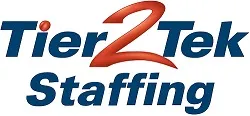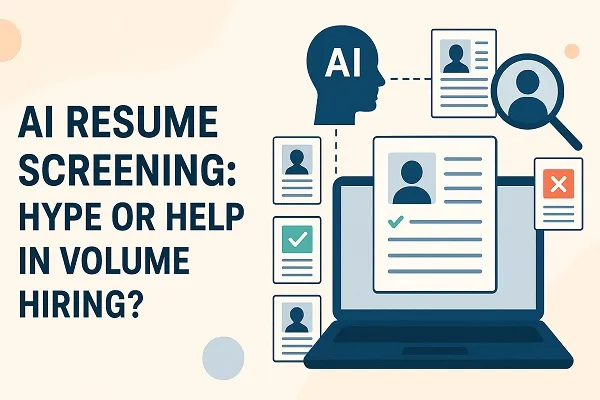AI resume screening has become a hot topic in recruitment, especially when companies are inundated with applications for high-volume hiring roles. As organizations strive to streamline their hiring processes and reduce time-to-fill, artificial intelligence tools promise to cut through the clutter and deliver top candidates faster. But does it truly help—or is it just another layer of hype?
This article explores how AI resume screening works, its benefits and challenges, and what HR professionals should consider when integrating these tools into their hiring workflows.
What Is AI Resume Screening?
AI resume screening uses machine learning algorithms to analyze resumes and match them against job descriptions. These systems can assess qualifications, experience, skills, and even language patterns to determine a candidate’s suitability for a role.
Key functions of AI resume screening tools include:
- Parsing resume content into structured data
- Comparing candidate qualifications to job requirements
- Ranking or scoring resumes
- Filtering out unqualified applicants automatically
These systems are designed to reduce recruiter workload and accelerate candidate shortlisting, especially in roles with hundreds or thousands of applicants.
The Benefits of AI in Volume Hiring
High-volume hiring often overwhelms recruiters with more resumes than they can review manually. AI aims to bring efficiency and consistency to this process.
Speed and Efficiency
- Automated parsing: AI quickly extracts relevant data from resumes, saving hours of manual effort.
- Instant filtering: Unqualified resumes can be screened out in seconds based on predefined criteria.
- Candidate ranking: AI can prioritize the top candidates for human review, speeding up decision-making.
Improved Consistency
AI applies the same logic to every resume, reducing the inconsistency and potential bias that may arise from human fatigue or subjectivity.
Cost Reduction
By minimizing manual screening time, companies can lower recruitment costs—particularly helpful for large organizations conducting seasonal or bulk hiring campaigns.
Challenges and Limitations of AI Resume Screening
Despite its advantages, AI resume screening is not without flaws. Blind reliance on these tools can introduce risks and unintended consequences.
Potential for Bias
Even though AI is often marketed as “unbiased,” the algorithms are trained on historical hiring data—which may include past human biases. If unchecked, AI may reinforce systemic issues, such as favoring certain schools, job titles, or demographics.
Missing Qualified Candidates
AI tools may reject resumes due to:
- Unconventional formatting
- Use of non-standard terminology
- Lack of keyword alignment with the job description
Strong candidates may be filtered out simply because their resumes don’t “speak the language” of the algorithm.
Limited Context Understanding
AI lacks the nuance to evaluate:
- Career changes or gaps
- Transferable skills not explicitly stated
- Soft skills and cultural fit
These are all areas where human recruiters still add significant value.
How AI Screening Works: Under the Hood

Understanding how these tools operate helps recruiters make better use of them.
Keyword Matching
Most AI tools match resume content to job descriptions using natural language processing (NLP). They look for keywords related to:
- Job titles
- Required skills
- Industry-specific terms
- Certifications or degrees
Machine Learning Algorithms
Over time, AI systems can “learn” from recruiter behavior—such as which candidates are shortlisted or hired—and adjust future rankings accordingly.
Integration with ATS
Modern resume screening tools are often embedded within applicant tracking systems (ATS), enabling a seamless flow from application intake to screening.
Best Practices for Using AI in Resume Screening
To get the most out of AI tools while minimizing risk, HR teams should implement these best practices:
1. Customize and Update Job Descriptions
- Use clear, inclusive, and up-to-date language
- Align the description with the actual skills needed
- Avoid overuse of jargon or buzzwords
2. Monitor for Algorithmic Bias
- Regularly audit which candidates are being filtered out
- Check if certain demographics are underrepresented in shortlists
- Work with vendors who offer transparency and bias-mitigation features
3. Combine AI with Human Oversight
AI should be an assistant, not a gatekeeper.
- Use AI to prioritize, not eliminate
- Let recruiters make the final call
- Periodically review rejected resumes to identify false negatives
When AI Is Most Effective in Volume Hiring

AI resume screening shines in scenarios where speed and scale are critical.
Examples include:
- Seasonal hiring: Retail, hospitality, or logistics companies during holidays
- Entry-level hiring: Where applicant volume is high and qualifications are standardized
- Call center recruitment: Where specific skillsets (like communication or bilingual ability) are easily identifiable
In contrast, for senior-level, creative, or leadership roles, human judgment should play a more central role.
Red Flags When Implementing AI Resume Screening
Before jumping on the AI bandwagon, employers should be cautious of:
- Black-box systems: If the vendor can’t explain how decisions are made, it’s a risk.
- Over-automation: Fully automated rejection can damage candidate experience and brand reputation.
- Lack of compliance: Ensure the system adheres to data protection and employment laws like the EEOC or GDPR.
Enhancing Candidate Experience in an AI-Driven Process
Even when using AI, companies must prioritize candidate experience.
Tips to maintain a human touch:
- Set expectations: Let applicants know that AI may assist in initial screening.
- Provide feedback: If a resume is rejected, offer guidance or automated suggestions.
- Ensure accessibility: Avoid tools that disadvantage applicants with disabilities or nontraditional resumes.
So, Is It Hype or Help?
AI resume screening can be a powerful aid in volume hiring—but only when used thoughtfully. It’s not a silver bullet, and it won’t replace human recruiters anytime soon. The technology helps reduce workload, speed up hiring, and bring consistency—but it also risks excluding great candidates if implemented without care.
Organizations that benefit the most use AI as a support tool, not as a decision-maker. They balance automation with empathy, speed with scrutiny. When done right, AI in resume screening is less hype and more help.
Content reviewed and published by Tier2Tek Staffing Editorial Team .

